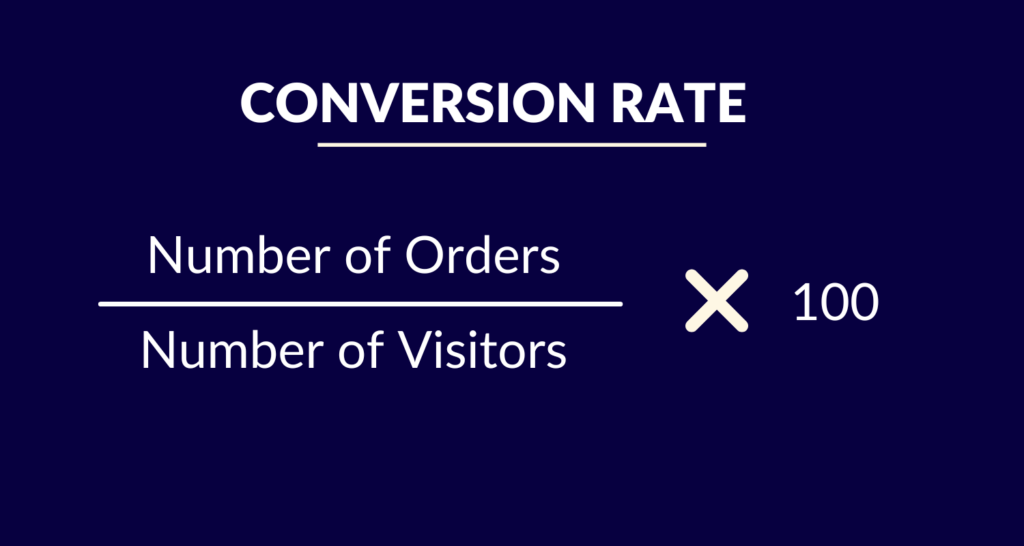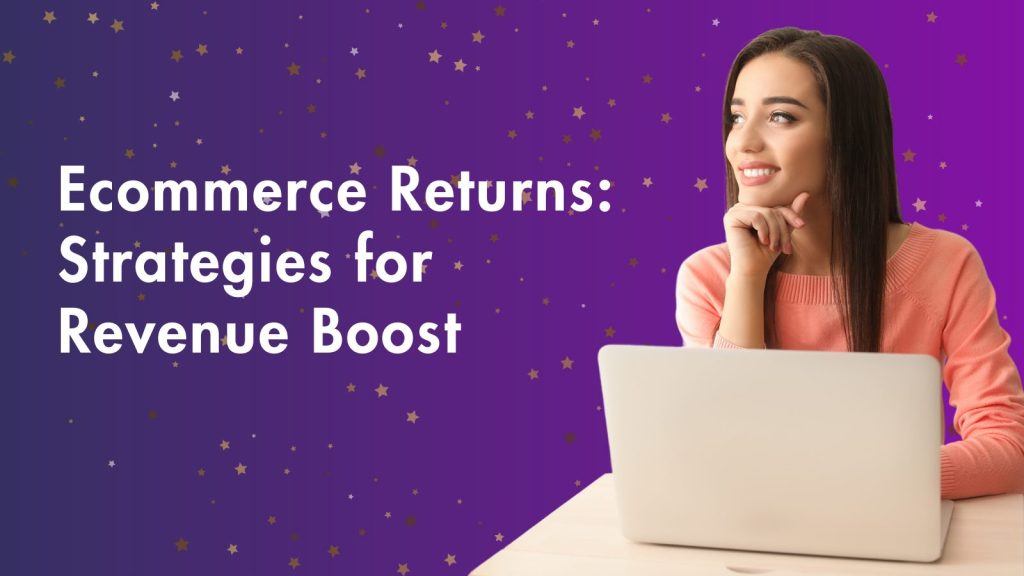If you’re running an online store, you already know that success is all about keeping a close eye on the numbers. And that’s where KPIs come in – the essential metrics that give you a glimpse into how your business is doing. As eCommerce continues to boom and online shopping becomes the norm, it’s more important than ever to measure the right metrics to ensure success in the digital world.
Whether you’re a numbers person or not, KPIs are crucial to eCommerce success, and in this blog post, we’re going to take a closer look at the 10 KPIs you need to know about. So, if you’re ready to take your eCommerce game to the next level, grab a coffee, and let’s dive into the world of KPIs for eCommerce!
Conversion rate
Conversion rate is one of the most important KPIs to track as it tells you how many website visitors are converting into customers. A low conversion rate means you are losing potential customers, while a high conversion rate means you are effectively persuading visitors to make a purchase. By tracking this KPI, you can identify areas where you can improve your website’s design, user experience, and product offerings to increase conversions.


How to improve conversion rate?
- Optimize your website speed – One of the biggest reasons for high bounce rates and low conversion rates is slow website speed. Make sure your website is optimized for speed, with compressed images and reduced file sizes.
- Simplify the checkout process – Make sure your checkout process is easy to navigate, with clear steps and minimal form fields.
- Use high-quality product images – The quality of your product images can make or break a sale. Use high-quality images that showcase your products in the best possible light.
- Include customer reviews– Customer reviews can be a powerful tool in increasing trust and credibility. Make sure to include customer reviews on your product pages.
- Provide excellent customer service: Excellent customer service can go a long way in improving conversions. Make sure to respond promptly to customer inquiries and provide a seamless customer experience.
- Reward customers – Rewarding customers with points or gift cards is a great way to bring customers back to your website and increase conversions.
Use WyseMe to reward your top customers with gift cards that they can redeem on your website.
Average order value (AOV)
The AOV measures the average amount customers spend on your website. This KPI is important because it allows you to identify your most profitable products and optimize your pricing strategy. You can also use this data to encourage customers to add more items to their cart through cross-selling and upselling techniques.


How to increase AOV?
- Offer Bundled Products – Increase AOV by grouping related products together and offering them at a discounted price. Customers are more likely to purchase a bundle than individual products, which can increase the AOV.
- Upsell and Cross-Sell – Upselling and cross-selling are powerful tactics to increase AOV. During the checkout process, recommend complementary products or upgrades that enhance the customer’s experience.
- Offer Discounts: Providing discounts on bulk purchases or offering a discount code for the next purchase can motivate customers to buy more, increasing the AOV.
- Provide Loyalty Programs: Implementing a loyalty program can incentivize customers to make larger purchases to earn rewards, increasing the AOV.
WyseMe is the world’s first-ever rewards and loyalty program that rewards shoppers with good shopping behavior and increases AOV for online brands.
Customer acquisition cost (CAC)
CAC measures how much it costs to acquire a new customer. This KPI is important because it tells you how much you should be spending on marketing and advertising to acquire new customers profitably. If your CAC is too high, you may need to reevaluate your marketing strategy or adjust your pricing.


How to reduce CAC?
High CAC can significantly impact your business profitability. Reduce CAC by half with WyseMe – the first-ever AI-powered customer acquisition and retention platform that helps brands acquire high-quality customers at affordable costs. Read more about WyseMe here.
Apart from this, implementing a referral program can encourage existing customers to refer their friends and family to your eCommerce business, which ultimately will reduce your CAC.
To reduce CAC further, invest in search engine optimization (SEO) which can increase organic traffic to your website, reducing the need for expensive paid advertising and lowering CAC.
Customer lifetime value (CLV)
CLV measures the total value of a customer to your business over their lifetime. This KPI is important because it helps you understand how much revenue you can expect from a single customer and identify which customers are most valuable. By increasing your CLV, you can boost your overall revenue and profitability.


How to increase CLV?
- Personalization: Providing a personalized shopping experience can increase customer loyalty and encourage repeat purchases, thus increasing CLV.
- Upselling and Cross-Selling: Upselling and cross-selling during the checkout process can increase the value of each purchase, leading to a higher CLV.
- Loyalty Program with WyseMe: Implementing a loyalty program with WyseMe incentivizes customers to make repeat purchases and refer their friends and family to your eCommerce business.
- Excellent Customer Service: Providing excellent customer service can build trust and loyalty with your customers, leading to repeat purchases and higher CLV.
Product Return Rate
Return rate tells you the number of products that are returned to your warehouse. This is a crucial KPI to track because returns are directly related to your profitability and your bottom-line. Higher the return rate, lower the revenue. By reducing your return rate, you minimize losses caused due to returns, increase your profits and save on operational costs that are usually incurred in handling returns.
How to reduce return rate?
Reduce your returns by an average of 30% with EcoReturns. Our AI-powered 3-layered returns reduction technology reduces returns for online brands, thus increasing profits and improving bottom-line. Features such as AI-powered incentive engine, deep analytics, returns fraud prevention and exchanges help brands reduce returns by multifold. Learn more about EcoReturns here.
Abandoned cart recovery rate
Last but not least , abandoned cart recovery rate is another major KPI that measures the percentage of abandoned carts that are recovered through email marketing campaigns or other tactics. By monitoring this KPI, you can identify which abandoned cart recovery strategies are most effective and optimize your tactics accordingly.
How to improve abandoned cart recovery rate?
- Send Abandoned Cart Emails: Remind customers about their abandoned cart and encourage them to complete the purchase. Use personalized subject lines and include a clear call-to-action to encourage customers to return to their cart.
- Offer Incentives: Offer incentives like discounts or free shipping to customers who return to their abandoned carts. This can encourage them to complete the purchase and improve abandoned cart recovery rate.
- Simplify Checkout Process: Simplifying the checkout process can reduce the chances of customers abandoning their cart. Minimize the number of steps required to complete the purchase and provide multiple payment options to make the checkout process as easy as possible.
- Optimize Website Speed: Slow website speeds can significantly impact abandoned cart recovery rate. Optimize website speed to ensure that customers can quickly and easily navigate through your website and complete the checkout process.
Final Say
With this, we’ve come to the end of our blog on the essential KPIs for eCommerce success. We hope that this blog has been helpful in providing you with the knowledge and tools you need to track and improve your eCommerce performance. Remember, KPIs for eCommerce are not just about tracking numbers but also about using that data to make informed decisions that drive business growth. So, keep tracking those KPIs, keep experimenting with new strategies, and keep striving for eCommerce success!




